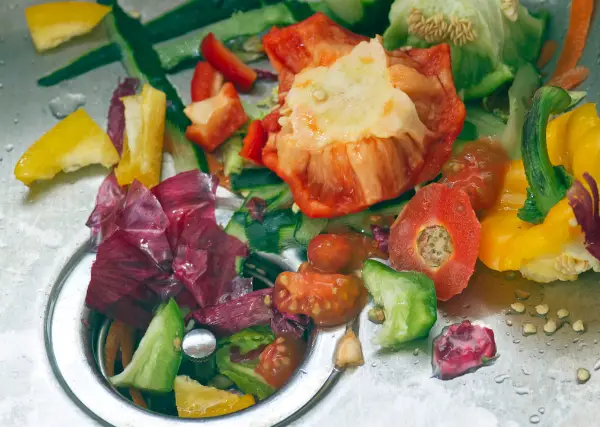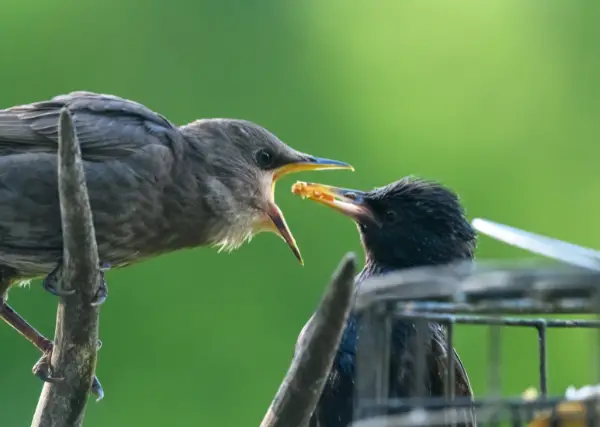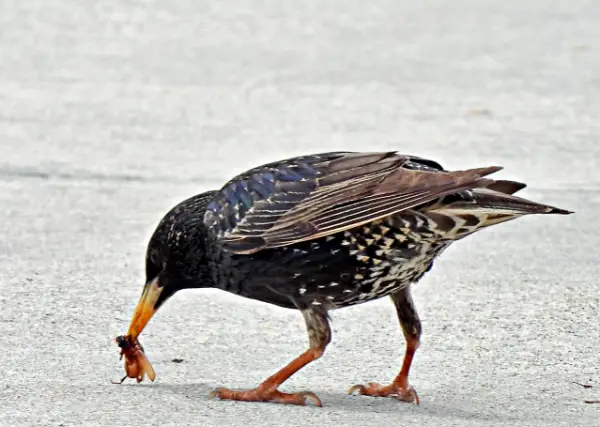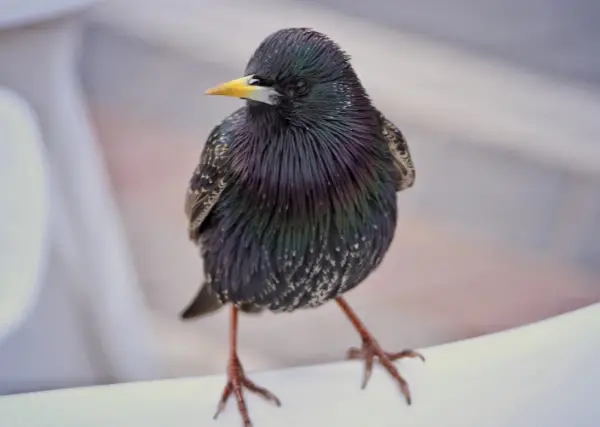Starlings are omnivorous birds, meaning they have a diverse diet that comprises plant and animal matter. They're highly adaptable and can thrive in various habitats, allowing them to find diverse food sources. Let's look at the foods they enjoy in the wild and what adult birds feed small starlings.
Further, we'll discuss ways to stop attracting starlings to your feeders if you don't want them in your backyard.
What Do Starlings Eat in the Wild?
Starlings, belonging to the family Sturnidae, are small to medium-sized birds known for their glossy plumage, short and pointed bills, and exceptional mimicry skills.
The common starling is highly social and forms massive flocks, often comprising thousands or millions of individuals during migration or roosting, with mesmerizing murmurations being a sight to behold.
Their nesting habits involve building nests in tree cavities, eaves, and other sheltered locations, and they readily use nesting boxes and human structures.
While native to Europe, Asia, and Africa, European Starlings (Sturnus vulgaris) have become invasive in North America, causing concerns for native bird species.
Here's what they eat in the wild:

Berries and Fruits
Starlings are opportunistic feeders and readily eat various fruits and berries when available. They can consume cultivated fruits like cherries, grapes, and blueberries. On top of that, they eat wild fruits from trees and bushes.
Insects and Invertebrates
Insects form a significant part of a starling's diet, especially during the breeding season when they need a high-protein diet to feed baby starlings. They eat insects like beetles, caterpillars, grasshoppers, and spiders.
Seeds and Grains
Starlings feed on seeds and grains, making them occasional pests in agricultural areas. They can consume seeds from various plants, including sunflowers, corn, and wheat.
Nectar
Starlings may also consume nectar from flowers in certain seasons, especially when other food sources are scarce.
Carrion
On occasion, starlings may scavenge on carrion, feeding on dead animals they come across.
What Starlings Eat in Human Settlements

Kitchen Scraps
In urban environments, starlings may scavenge for food in trash bins and around human settlements. They may eat processed foods from your kitchen.
Small Vertebrates
While not as common as their other food sources, starlings have been observed preying on small vertebrates like lizards, small mammals, young birds, or eggs of other birds.
What Baby Starlings Eat
Baby starlings, or nestlings, have specific dietary needs to support their rapid growth and development. Like many other young birds, they depend on their parents for nourishment. The primary diet of baby starlings consists of insects and invertebrates, providing essential proteins and nutrients crucial for their growth.
Hence, starling parents actively hunt and gather insects, such as beetles, caterpillars, grasshoppers, and spiders, to feed their hungry young starlings. They forage these creatures in various habitats, including lawns, gardens, and open fields.
The parents catch the insects in flight or search for them on the ground, ensuring a varied and nutritious diet for small starlings.

Upon returning to the nest, the parent starlings regurgitate the pre-digested food for the nestlings to consume. This process aids in breaking down the insects into smaller, more manageable pieces that the small starlings can swallow and digest.
As the nestlings grow, their nutritional requirements change and the parents adjust their hunting and feeding habits accordingly. They continue to cater to their offspring's needs until they're ready to fledge, leaving the nest to venture into the world.
At this stage, the fledglings begin to explore a range of foods and develop their foraging skills while occasionally receiving support from their parents during the transition period.
What Do Starlings Eat at Backyard Feeders?
Feeding starlings from your bird feeder can be a double-edged sword. While providing food for them can be enjoyable and help support bird populations, be cautious, as starlings can be aggressive and may dominate bird feeders, out-competing native birds.
How To Get Rid Of Starlings
Here are some solutions to keep urban starlings out of your backyard:
Use a Feeder that Restricts Starlings
Starlings are fond of suet, a high-energy food consisting of animal fat, seeds, nuts, or fruits. To ensure smaller birds get something to eat at your feeders, use a suet feeder with a cage design, allowing small birds to access the suet while restricting larger birds like starlings.
Another option is installing a hopper feeder. It's an enclosed container that can hold a variety of seeds.
Although starlings love seeds, this type of bird feeder can reduce their access by incorporating mechanisms to close the feeding ports under the weight of a large bird, like an adult starling.
Offer Unsuitable Bird Food
Starlings are less interested in nyjer (thistle) seeds that smaller songbirds like finches and sparrows love. Consequently, a Nyjer feeder with small feeding ports can deter starlings.
Starlings generally do not prefer safflower seeds, but many other birds, such as cardinals and chickadees, do.
Hence, a safflower seed feeder will attract these desirable species while discouraging starlings.
Avoid Bread and Table Scraps
While offering bread or table scraps is tempting, these items lack essential nutrients, leading to nutritional deficiencies. On top of that, kitchen scraps attract starlings. Keep your backyard clean and close your bins unless you want to feed starlings.

Conclusion
Starlings are social birds. They love flocks and mingling with other species. They're the type that bird watchers want in their backyard. However, they eat almost anything, from kitchen scraps to invertebrates.
They also eat small birds and build nests in human structures. Therefore, if you want to see starlings, go birding in the wild, and avoid attracting them to your feeders. In the wild, they eat insects, seeds, carrion, and fruits. Further, they explore agricultural lands for berries and fruits.
FAQs
What is a starling's favorite food?
Starlings have a diverse and adaptable diet, but their favorite foods typically include insects and invertebrates, especially during the breeding season. They're also fond of fruits and berries and are attracted to suet, making them frequent visitors to suet feeders.
Additionally, they may scavenge for kitchen scraps and readily consume seeds and grains.
Do starlings eat bugs or seeds?
Starlings are omnivorous birds and eat both bugs and seeds. They have a varied diet that includes insects, spiders, and other invertebrates, especially during the breeding season when they need protein for their young.
What food will starlings not eat?
While starlings are omnivorous and opportunistic feeders, there are certain foods they generally avoid, such as nyjer (thistle) seeds. Additionally, starlings are less likely to consume safflower seeds. However, they eat so many things that the ones they don't aren't significant.

